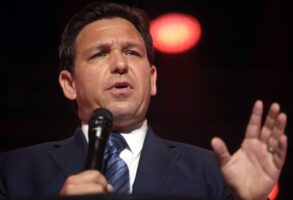
Published February 7, 2015
Democrats have been crowing for years that demographic changes will lock in a blue majority that will last for decades to come. Whether they focus on Millennials, non-whites, single women, or college graduates working in creative industries, their essential prognosis has been the same. This “Rising American Electorate” (RAE) keeps increasing as a share of the national electorate, and each segment of the RAE tilts significantly toward the Democratic party. Thus, the argument goes, national dominance is all but ensured for the party of the donkey as long as the GOP stays as resolutely conservative as it is.
One of the co-authors of the book that started this line of thinking has now partially recanted. John Judis, co-author of 2002’s The Emerging Democratic Majority, wrote an important piece in this week’s National Journal walking back the RAE argument. In fact, Judis now contends that America has an “Emerging Republican Advantage” based on the national Democratic party’s loss of support among working-class and college-educated, middle-income whites.
Does this article mean that supporters of the “donkey rising” argument are now jackasses? Hardly. As often happens, the truth is more complicated. Simplistic supporters of the RAE argument always overlooked a crucial component of what Judis and his co-author, Ruy Teixeira, were saying: The RAE can be decisive only if Democrats retain a significant share of the white working-class vote. But simplistic proponents of the “natural Republican majority” counter-thesis also overlook the elements of white-working-class and middle-class psychology that makes them quintessential swing voters.
I first weighed in to this debate in a 2009 review essay in the Claremont Review of Books. In that essay, I noted that Judis and Teixeira had to that point been eerily prescient in their predictions of how non-whites and college-educated whites would increase in size as a proportion of the electorate and maintain large Democratic margins. I pointed out, however, that there was one glaring hole in their thesis. They had predicted that the white working class would also move to the Democrats based on economic populism, “a defining difference between the Democrats and the Whigs, and the Democrats and the Republicans, since the 1830s.” Even in 2009, however, it was clear that this analysis was flawed. Judis and Teixeira had predicted all the states that would move from Bush to Obama in 2008 except Indiana. They had also thought, however, that West Virginia, Kentucky, and Missouri would move left. Instead, each state moved right, and has moved even farther to the right during the Obama presidency.
The failure of the Democratic leadership, from the president down to Nancy Pelosi and Harry Reid, to grasp the original Judis-Teixeira analysis has proven to be their undoing. Every election since 2008 can be explained with reference to how white working-class and middle-income white college grads have swung. In 2012, enough of them stayed home or stuck with Obama to propel him to a comfortable victory over Mitt Romney. The state-level exit polls did not publicly break down white voters by education in 2012, but journalist Ron Brownstein used privately available data to calculate that Obama won or ran close to even among white working-class voters in Iowa and New Hampshire. He received between 42 and 45 percent of this group’s votes in the other northern swing states of Wisconsin, Michigan, Ohio, and Pennsylvania. These voters’ unwillingness to back Romney, not the Rising American Electorate, delivered the key northern and Midwestern swing states to the president.
In 2010 and 2014, however, these voters reacted against a liberal progressive Democratic D.C. establishment and swung strongly to the right. In doing so, they backed Republicans of all stripes, from tea partiers to moderates. These victories should be examined in conjunction with the 2012 defeat to grasp what really motivates these key swing voters.
Judis basically gets them right when he notes that they are suspicious of, but not hostile to, government. They no longer trust government to automatically act in their interest, but neither do they think that all government is evil — especially those aspects of government they can feel most directly in their lives: police, public schools, and mass entitlement programs.
These voters, and their more educated suburban counterparts, want what they have wanted since the New Deal: private prosperity built on a base of public investment. They do not believe that government can give them jobs, and they do not begrudge someone a large income from hard, honest work. But they also think the public has the responsibility to provide some cushion against economic shocks provided that the people hurt by the shocks “work hard and play by the rules.” They think entitlement programs that give them income and health-care security in old age are morally just, and they care less about those programs’ cost than about what they offer. For most voters in these groups, either Center for American Progress liberalism or FreedomWorks neo-libertarianism are steps too far in either direction.
The task for Republicans going forward, then, is to present a positive image of the party that incorporates healthy respect for private initiative with an eagerness to make government work for the average person and the struggling person. This does not mean ever-expanding government per se: Scott Walker, for example, has cut K–12 spending and is trying to cut higher-education spending in his current budget. But it does mean that the focus needs to be on restoring public services to their core missions, which are to help average people with a hand up rather than to become captured by the providers and give them a handout.
This means the next Republican nominee must offer an agenda that is distinct and original while being firmly rooted in conservative values. These voters will back mild tax cuts for the top bracket if they also get tax cuts: revenue-neutral individual tax reform is likely to be less palatable than a Lee-Rubio-style tax cut that balances rate reduction with increased tax credits for the working and middle classes. It means focusing as much on how government inadvertently keeps the native-born, marginal worker out of the labor force (thereby increasing the need for low-skilled immigration) as on how to unleash the entrepreneur.
Most important, it means Republicans must avoid the belief that showing that they care about the poor is the same as showing that they “care about people like me,” the quality that voters find conservatives and Republicans most deficient in. The key words in that phrase from the exit polls are “like me.” If working-class whites and middle-income college-educated whites hear about tax cuts for entrepreneurs and targeted help for the poor, they will rightly conclude that the GOP doesn’t understand them — and this will make them open to a smart, less doctrinairely leftist Democratic platform.
I write this on the 104th anniversary of Ronald Reagan’s birth. Republicans who want to submerge the Democratic majority should read Reagan’s speeches carefully, for he always spoke in terms of helping average people help themselves. He did not talk about the economy as the province of beneficent job creators whose liberation will save us all. Instead, in his First Inaugural he lumped entrepreneurs together as equals with factory laborers, farmers, shopkeepers, and moms as all having the right to “dream great dreams.”
Reagan’s grave lies in sunny Southern California, and it bears an epitaph that every Republican presidential candidate should memorize and grok. “I know in my heart that man is good, that right will eventually triumph, and there is purpose and worth to each and every life.” The nominee who can speak those words with full intensity of passion and without a hint of irony will find the keys of the kingdom delivered unto him, and the prospect of a conservative America full at hand.
— Henry Olsen is a senior fellow at the Ethics and Public Policy Center.







